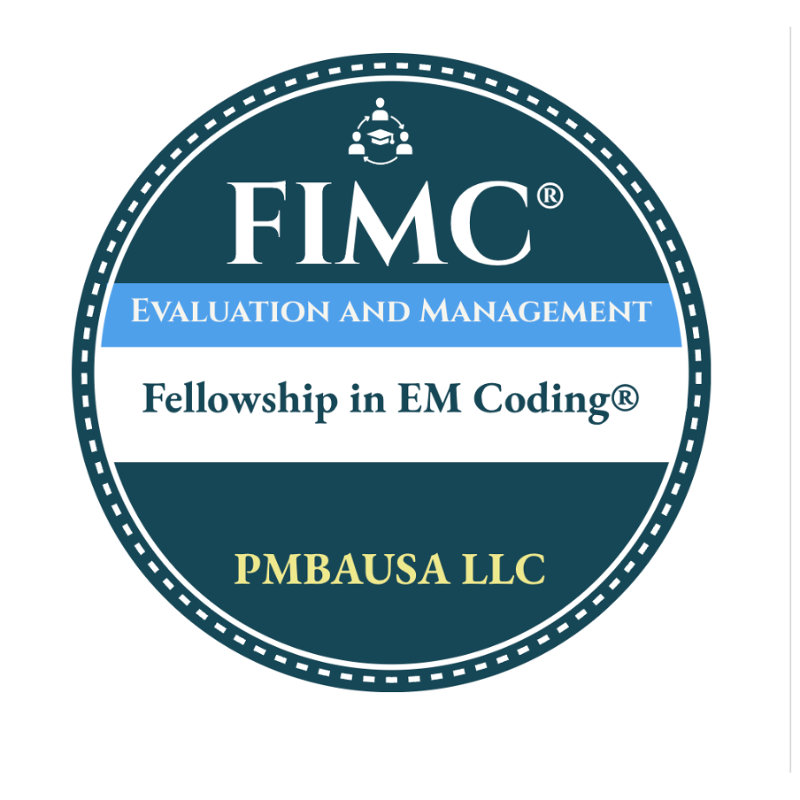Table of Contents
Introduction to E/M Coding
Understanding E/M Coding
Evaluation and Management (E/M) coding is a critical component of medical billing and documentation. It involves the use of specific codes to represent the services provided by healthcare professionals during patient encounters. These codes are essential for ensuring accurate billing and reimbursement from insurance companies. Understanding E/M coding principles and guidelines is crucial for healthcare providers, medical coders, and billing specialists.
The Purpose of E/M Codes
E/M codes are designed to standardize the reporting of medical services. They help in categorizing the complexity and nature of patient visits, ranging from routine check-ups to more complex consultations. By using these codes, healthcare providers can communicate the level of care provided, ensuring that they receive appropriate compensation for their services.
Core Principles of E/M Coding
The core principles of E/M coding revolve around three key components: history, examination, and medical decision-making. These components are used to determine the level of service provided during a patient encounter. Each component is evaluated based on specific criteria, which are outlined in the E/M coding guidelines.
History Component
The history component involves gathering information about the patient\'s medical history, including their chief complaint, history of present illness, past medical history, family history, and social history. This information helps in understanding the patient\'s current health status and any underlying conditions that may impact their care.
Examination Component
The examination component involves a physical examination of the patient. The extent and nature of the examination depend on the patient\'s presenting problem and the healthcare provider\'s clinical judgment. The examination is documented in the patient\'s medical record and is used to support the level of service billed.
Medical Decision-Making Component
Medical decision-making refers to the complexity of establishing a diagnosis and determining the appropriate management plan for the patient. It involves evaluating the patient\'s condition, considering diagnostic and treatment options, and assessing the risks and benefits of different approaches. The level of medical decision-making is a critical factor in determining the appropriate E/M code.
Guidelines for E/M Coding
The guidelines for E/M coding are established by the American Medical Association (AMA) and the Centers for Medicare & Medicaid Services (CMS). These guidelines provide detailed instructions on how to select the appropriate E/M code based on the components of history, examination, and medical decision-making. They also outline documentation requirements and coding conventions to ensure consistency and accuracy in coding.
Choosing the Correct E/M Code
Choosing the correct E/M code requires a thorough understanding of the coding guidelines and the ability to accurately assess the components of a patient encounter. Healthcare providers and coders must carefully review the documentation to ensure that the selected code accurately reflects the level of service provided. This process involves analyzing the complexity of the patient\'s condition, the extent of the examination, and the decision-making involved in their care.
CMS Guidelines for E/M Coding
Introduction to E/M Coding
Evaluation and Management (E/M) coding is a critical component of medical billing, used by healthcare providers to document and bill for patient encounters. The Centers for Medicare & Medicaid Services (CMS) provides detailed guidelines to ensure accurate and consistent coding practices. Understanding these guidelines is essential for healthcare professionals to ensure compliance and optimize reimbursement.
Understanding E/M Codes
E/M codes are part of the Current Procedural Terminology (CPT) codes, which are used to describe the services provided by healthcare professionals. These codes are divided into different categories based on the type and complexity of the service provided. The main categories include office visits, hospital visits, consultations, and emergency department services.
Key Components of E/M Coding
The CMS guidelines for E/M coding emphasize three key components: history, examination, and medical decision-making. Each of these components is evaluated to determine the appropriate E/M code for a patient encounter.
History: This includes the patient's medical history, family history, and social history. The level of detail required depends on the complexity of the encounter.
Examination: The physical examination of the patient is another critical component. The extent of the examination varies based on the patient's condition and the nature of the visit.
Medical Decision-Making: This involves the complexity of establishing a diagnosis and selecting a management option. It considers the number of possible diagnoses, the amount of data to be reviewed, and the risk of complications.
Levels of E/M Services
E/M services are categorized into different levels based on the complexity and time spent on the encounter. The CMS guidelines provide specific criteria for each level, ensuring that the coding accurately reflects the services provided.
Level 1: Minimal complexity, typically involving straightforward cases with limited examination and decision-making.
Level 2: Low complexity, involving a more detailed examination and decision-making process.
Level 3: Moderate complexity, requiring a comprehensive examination and more complex decision-making.
Level 4: High complexity, involving extensive examination and complex decision-making.
Level 5: Highest complexity, reserved for cases that require the most detailed examination and decision-making.
Documentation Requirements
Accurate documentation is crucial for E/M coding. The CMS guidelines specify the documentation requirements for each level of service. This includes detailed notes on the patient's history, examination findings, and the rationale for medical decision-making. Proper documentation ensures that the services provided are accurately reflected in the billing process.
Common Challenges and Best Practices
One of the common challenges in E/M coding is selecting the appropriate level of service. Overcoding or undercoding can lead to compliance issues and affect reimbursement. To address this, healthcare providers should familiarize themselves with the CMS guidelines and utilize tools such as coding audits and training programs.
Best practices for E/M coding include maintaining up-to-date knowledge of coding guidelines, ensuring thorough documentation, and using electronic health records (EHR) systems to streamline the coding process.
Advanced E/M Coding Techniques
Introduction to Advanced E/M Coding
Evaluation and Management (E/M) coding is a critical component of medical billing that requires precision and a deep understanding of guidelines. As healthcare evolves, so do the complexities of E/M coding. This chapter delves into advanced techniques and guidelines that can enhance accuracy and efficiency in E/M coding, ensuring compliance and maximizing reimbursement.
Understanding the Nuances of E/M Codes
Advanced E/M coding begins with a thorough understanding of the nuances associated with different E/M codes. Each code corresponds to specific levels of service, which are determined by the complexity of the patient’s condition and the extent of the services provided. Coders must be adept at distinguishing between these levels to apply the correct codes.
Mastering the 2021 E/M Guidelines
In 2021, significant changes were made to the E/M coding guidelines, particularly for office and outpatient visits. These changes emphasize medical decision-making (MDM) and time as the primary factors for code selection. Advanced coders must be proficient in applying these guidelines, understanding the elements of MDM, and accurately calculating time spent on patient care.
Utilizing Technology for Enhanced Accuracy
Technology plays a pivotal role in advanced E/M coding. Coders should leverage electronic health records (EHR) systems and coding software to streamline the coding process. These tools can help identify appropriate codes, ensure compliance with guidelines, and reduce the risk of errors. Staying updated with the latest software advancements is crucial for maintaining coding efficiency.
Documentation Best Practices
Accurate and thorough documentation is the backbone of effective E/M coding. Advanced coders must ensure that documentation supports the level of service billed. This includes detailed notes on the patient’s history, examination, and the complexity of medical decision-making. Proper documentation not only supports code selection but also protects against audits and denials.
Addressing Common Coding Challenges
Advanced E/M coding involves navigating common challenges such as distinguishing between new and established patients, selecting the correct level of service, and understanding payer-specific requirements. Coders must be equipped with strategies to address these challenges, including continuous education and collaboration with healthcare providers.
Continuous Education and Professional Development
The field of E/M coding is dynamic, with frequent updates to guidelines and regulations. Advanced coders must commit to continuous education and professional development. This includes attending workshops, participating in coding forums, and obtaining certifications that enhance their expertise and credibility in the field.
Advanced E/M coding techniques are essential for ensuring accurate billing and optimal reimbursement in healthcare. By mastering the nuances of E/M codes, utilizing technology, adhering to documentation best practices, and addressing common challenges, coders can enhance their proficiency and contribute to the financial health of their organizations. Continuous education and professional development remain key to staying ahead in this ever-evolving field.
MDM Level for Auditors
Medical Decision Making (MDM) Levels
Accurate E/M (Evaluation and Management) coding is essential for proper documentation, compliance, and reimbursement. One of the key elements in selecting the correct E/M code is Medical Decision Making (MDM). To ensure accurate coding, follow these essential steps:
Step-by-Step Approach to Determine MDM Level
1. Check for Time Documentation
• If time is clearly documented, you may code based on total time (especially for office or other outpatient E/M visits).
• This is often the easiest route for E/M code selection when time criteria are met.
2. Identify the Location of Service
• Determine where the service was provided:
- Office / Outpatient
- Observation or Inpatient
- Emergency Department (ED)
- Intensive or Critical Care Unit (ICU/NICU)
- • Code selection is tied closely to the place of service.
3. Determine the Type of Service Provided
• Clarify what type of encounter it was:
- Preventive care
- Critical care
- Telehealth visit
- Follow-up visit
- Consultation
• Different types of services may have separate CPT code families.
4. Assign Codes Based on MDM Complexity
• If time-based coding is not used, refer to the MDM table in the CPT manual.
• MDM is broken down into four levels:
- Straightforward
- Low
- Moderate
- High
Break Down the Clinical Scenario
• Chief Complaint + HPI → Problem addressed
• Labs, tests, records reviewed → Data points
• Treatment/Plan/Risk → Management complexity
MDM is based on three core elements:
- Number and complexity of problems addressed
- Amount and/or complexity of data reviewed and analyzed
- Risk of complications and/or morbidity/mortality of patient management
• All three elements are assessed to determine the overall MDM level (for office/outpatient E/M). In some settings, 2 of 3 elements are sufficient (e.g., established patient visits).
Tips for Auditors
• Study the MDM chart in the CPT manual thoroughly.
• Practice real-world scenarios to understand the clinical logic behind documentation.
• Develop fluency in differentiating MDM levels through case-based learning.
• Use a checklist when reviewing provider documentation to ensure all components are met.
MDM is not just about what is documented—it reflects clinical thinking and complexity. The better you understand the provider’s thought process, the more accurately you can code.






